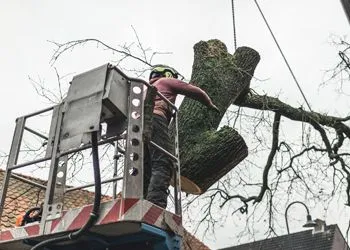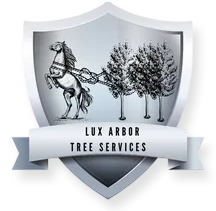Common Signs That a Tree Is a Safety Hazard & Should Be Removed

When big trees become unhealthy or unstable, they can pose a serious risk. A hazardous tree can damage homes, vehicles, and power lines or even cause injury if it falls. At Lux Arbor Tree Services, we can identify hazardous trees and safely remove them as necessary. Here are four signs that a tree on your property may need to be removed.
Visible Signs of Decay or Disease
If a tree has large sections of dead wood, crumbling bark, or fungal growth, it may be suffering from decay or disease. While some diseases can be treated, extensive decay weakens the tree’s structure, making it more likely to break or collapse. Mushrooms growing at the base of the trunk are often a sign of internal rot, which can compromise the tree’s stability. If a significant portion of the tree is affected, removal may be the safest option.
Leaning or Unstable Trunk
A tree that is noticeably leaning, especially if it has shifted suddenly, is a major safety concern. While some trees naturally grow at an angle, a tree that is leaning due to root damage or storm impact is at high risk of falling. Cracks or splits in the trunk can also indicate structural weakness. If the tree appears to be unsteady or if the ground around its base is lifting, it’s crucial to have it assessed by a professional to determine if removal is necessary.
Damage to the Root System
A tree’s roots provide stability and nutrients, so any damage to the root system can compromise its health and structure. Construction work, soil erosion, and fungal infections can all lead to root decay. If you notice exposed or damaged roots or the tree shifting in the soil, the tree may be at risk of falling. Trees with extensive root damage often cannot recover and should be removed before they become a danger.
Proximity to Structures or Power Lines
Trees that grow too close to homes, fences, or power lines can create serious hazards. Overgrown branches may scrape against roofs or siding, causing damage over time. In strong winds, limbs can snap and fall onto buildings or electrical lines, leading to costly repairs and power outages. If a tree is encroaching on a structure or utility line and cannot be safely trimmed back, removal may be the best course of action.
Tree Removal in Lynchburg, VA
When you need
professional tree removal in Lynchburg and the surrounding area, contact Lux Arbor Tree Services at
540-216-0251. Feel free to give us a call to request a free estimate for tree services in Lynchburg, VA!



